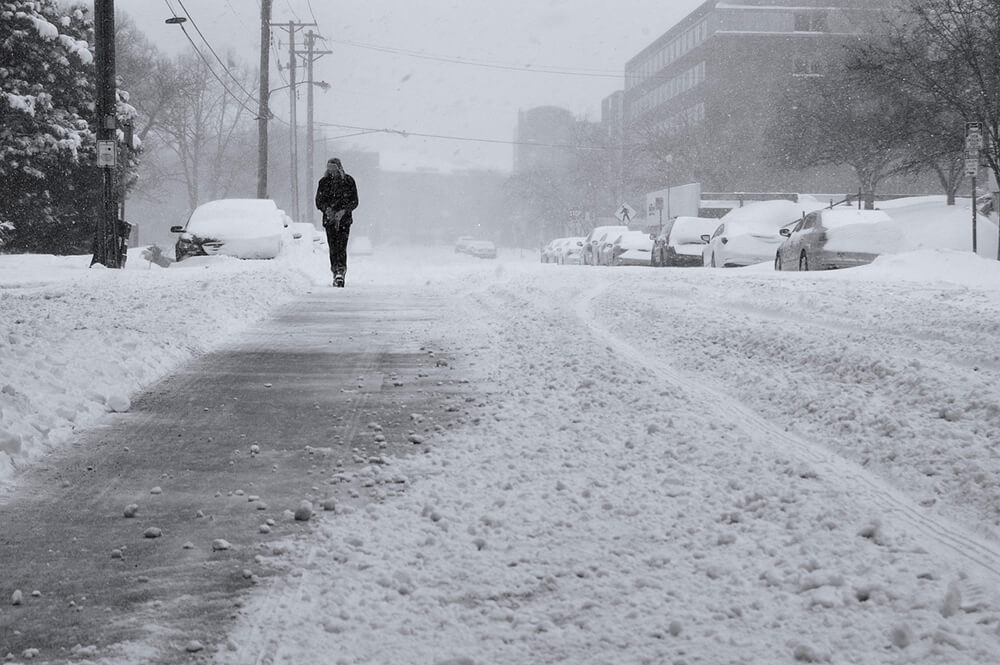What to Do If You Have Injuries from Slipping on Ice

We see a lot of snow and ice in the winter here in Marion, IL. This familiarity often makes some of us more confident in our abilities to navigate certain terrain than others who aren’t as used to it. That’s not necessarily a good thing.
The accumulation of snow and ice can result in slips and falls if someone loses their footing on such surfaces. Such an incident can result in someone suffering serious injuries.
There’s often a lot of confusion about whether state officials, Marion homeowners, or business owners have an obligation to maintain their premises. That’s one of the concerns we aim to address in this article.
We will also highlight a few common instances in which slips and falls on ice occur and how to minimize your chances of getting hurt. We’ll also go over the options that may be available to you if you suffer injuries in such an incident in Illinois.
What Causes Slips and Falls on Ice to Occur?
Snow tends to melt when temperatures outside creep up above freezing, causing large amounts of water to accumulate fast. This water can refreeze, creating a sheet of ice if temperatures drop below freezing soon thereafter.
Where Do Slip and Falls on Ice Most Often Occur?
SFM, a midwestern insurance company, combed through its claim statistics to gain a better perspective as to where snow or ice-related falls most commonly happen. They determined that at least 25% of these incidents occurred in parking lots. That same insurer also determined that between incident-related medical bills and lost wages, the average person injured in a slip-and-fall accident due to snow or ice incurs as much as $45,000 in losses.
Are There Laws Requiring Snow or Ice Removal in Marion, IL?
One common question that clients often ask personal injury attorneys after slipping on ice and suffering injuries is whether home and business owners have any obligation to maintain their premises to avoid falling incidents.
Residential property owners seldom have an obligation to remove snow or ice from around their homes. The Illinois Snow and Ice Removal Act, 745 ILCS 75, encourages residents to clear the sidewalks in front of their homes but is also clear in stating that those individuals injured on an Illinois resident’s property cannot hold them liable for injuries they suffer due to their failure to remove an accumulation of snow or ice.
While Chicago has local ordinances requiring homeowners to maintain the sidewalk abutting their properties, no similar codes currently exist in Williamson or Johnson Counties, where Marion, IL lies.
As a result, it may be difficult to hold a homeowner in Marion liable for injuries that you suffer due to an accumulation of snow or ice on their property. Doing so may still be possible if you can prove that a homeowner’s wonton and willful conduct led to them having extraordinarily unsafe premises, though.
However, different standards may apply to businesses and governmental entities. There’s generally a requirement to keep their property reasonably safe for visitors who frequent their premises. Government agencies and business owners or their landlords may have to engage in shoveling snow and salting paved areas as part of this or otherwise face legal action if someone gets hurt due to them not doing so.
How to Minimize Your Chances of Slipping and Falling on Ice
Some strategies that can be effective in reducing your chances of getting hurt in a slip and fall accident on ice include:
- Donning weather-appropriate shoes with traction like boots instead of ones with smooth soles or heels
- Walking very slowly with flat-footed steps (some refer to this as walking like a penguin)
- Keeping to well-marked paths that are likely to have been safely traversed by others
- Ensuring you step down instead of out from curbs or vehicles
A few recommendations that safety analysts recommend if a fall appears to be unavoidable are for individuals to:
- Put their hands out to break their fall (and protect their head from colliding with the ground or other immobile objects)
- Tuck and roll whenever possible to ensure the fall’s impact ends up being evenly distributed across the body.
What Other Types of Surfaces May Result in Slip and Falls?
There are other types of slip and fall hazards that individuals have to worry about outside of the winter season. These include:
- Soapy or recently waxed floors
- At building entryways where water may have been tracked in from outside
- On unmarked curbs or uneven or cracked pavement
- Spilled beverages or food products
- Cluttered walkways or stairs
- On frayed carpets or uneven or chipped tiles
- Floor mats at entryways or exits
Each of these can cause just as if not more serious injuries as snow and ice.
Injuries That Most Commonly Result from Slip and Fall Incidents
Centers for Disease Control and Prevention (CDC) statistics show that 800,000 Americans are treated in hospitals following a slip and fall accident each year. Injuries resulting from these incidents can vary. Some of the most common ones may include ankle, wrist, back, or shoulder injuries. While some of these ailments can improve with compression or ice to decrease swelling or bruising, others may warrant casting or surgery, such as if a bone is shattered in the process.
Traumatic brain injuries and spinal cord ones are more apt to occur due to a person’s head making contact with an inanimate object or the ground or if the fall’s force is particularly violent.
What To Know About Filing a Slip and Fall Lawsuit in Illinois
You may feel inclined to pursue legal action against a homeowner, business owner, or government agency if you suffered serious injuries in a slip and fall incident on their premises. Any experienced personal injury attorney in Marion, IL will quickly advise you that the burden of proof rests on your shoulders if you’re planning to file such a lawsuit. Some evidence that may enhance your narrative of events and thus your case include:
- Your victim statement
- Documentation showing snow removal ordinances
- Photographs of the scene of the incident
- Weather or topographical data
- Witness statements
It is challenging to know which information to compile and where to get it from as well as the different filing procedures and statutes of limitations that apply to these cases. Proving liability adds an extra layer of complexity. To have the best chance of success with a slip and fall case, you’ll want the help of an experienced law firm like Prince Law Firm handling your case.









